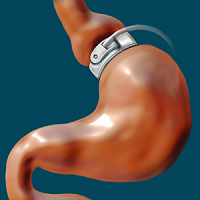Bariatric Surgery
Surgery that helps to reduce your weight. One has many options to lose weight like diet control and exercise. Bariatric surgery is another option. It is the option, when others fail. It is the option when you can’t opt for other options for whatever reason.
Bariatric surgery is most helpful if you have severe obesity and have not been able to lose enough weight to improve your health using other methods or have serious obesity-related health problems. It is not something like liposuction where fat is sucked out. The surgery makes the stomach smaller and sometimes changes the small intestine.
In bariatric surgery surgeons alter stomach and small intestine.
There are mainly 2 types in Bariatric Surgery..- Restrictive
- Malabsorptive
Restrictive procedures restrict food intake. After these procedures one can take only 10% of their normal intake.
- Adjustable Gastric Band
- Vertical sleeve gastrectomy
Malabsorptive procedure are designed to reduce absorption of food.
- Mini Gastric Bypass
- Roux en Y Gastric Bypass
- Bilio Pancreatic Diversion
- Duodenal Switch
Every procedure has its own advantages and disadvantages.
- Laparoscopic adjustable gastric band
- Gastric sleeve surgery, also called sleeve gastrectomy
- Gastric bypass
Above 3 are common procedures done. Out of these 3 sleeve gastrectomy is most common.
Laparoscopic Adjustable Gastric Band
In this type of surgery, the surgeon places a ring with inflatable band around upper part of stomach to make it small. This makes you feel full after eating a small amount of food. The b circular balloon inside the device is filled with salt solution. The surgeon can alter the size by injecting or removing the solution through a small port placed under your skin.
Several follow-up visits are needed to adjust the size of the band. If the band causes problems or is not helping you lose enough weight, the surgeon may remove it.

Gastric Sleeve
In vertical sleeve gastrectomy, surgeon removes most of your stomach, leaving only a section that is closed with staples. Like gastric band surgery, this surgery reduces the amount of food that can fill the stomach. Taking out part of your stomach may also affect appetite and metabolism. This type of surgery cannot be reversed because some of the stomach is permanently removed.

Gastric Bypass
Gastric bypass surgery has two parts. First, stomach is stapled and made into small pouch. Like in sleeve this restricts food intake.
Second part involves attaching lower part of small intestine directly to this pouch bypassing certain length of upper part of small intestine. Food then bypasses most of the stomach and the upper part of small intestine so body absorbs fewer calories. The surgeon connects the bypassed section farther down to the lower part of the small intestine. This bypassed section is still attached to the main part of your stomach, so digestive juices can move from your stomach and the first part of your small intestine into the lower part of your small intestine. Gastric bypass is difficult to reverse, but can be done if medically necessary.


